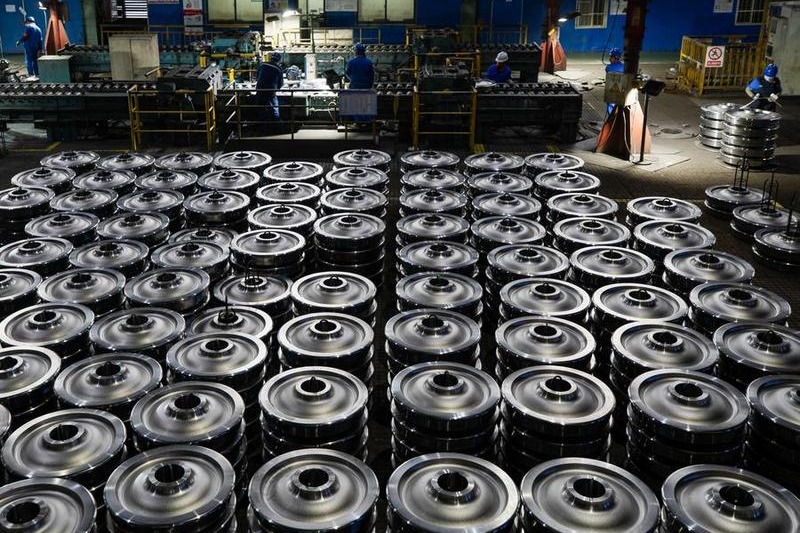Self-taught technicians break new ground in North China relic site

SHIJIAZHUANG-Bai Riyou, a 59-year-old farmer, is sweeping layers of soil at a relic site in North China's Hebei province.
He is sure that the still half-buried item he is unearthing at the site of the Nihewan ruins area in Yangyuan county in the city of Zhangjiakou, is not merely a stone, but an artifact that may belong to an early human being.
After speaking with other on-site workers, he wonders how many artifacts he will find before sunset.
The Nihewan ruins, an important heritage site under state protection, has yielded a trove of mammal fossils and Paleolithic remnants. As of last year, about 400 Paleolithic and Neolithic relic sites had been discovered in the area.
Besides farm work, the farmers living in the area with abundant archaeological resources have also participated in archaeological missions and accumulated investigation experience, and therefore formed a team consisting of self-taught technicians.
Bai took on his role in the group by accident nearly 30 years ago.
"It was in 1991 when I stumbled across a fossil while herding my livestock. However, I thought it was just a stone and didn't pay much attention," he recalls.
Archaeologists later came to investigate the area and learned that it was an elephant skull fossil.
"Realizing there are cultural relics in the ground where I walk on is a novel feeling, which ignited my interest in archaeology and led me to embark on the path a year later," he says.
In addition to the digging and discoveries in the area, he has also taken part in archaeological excavation activities across China.
He has been to East China's Anhui province to search for archaeological materials of the Shang and Zhou dynasties (c.16th century-256 BC); he has visited Northwest China's Shaanxi province to conduct an investigation on Paleolithic artifacts; he has traveled to the northern Chinese port city of Tianjin to repair Han Dynasty (206 BC-AD 220) pottery.
Bai has been recognized as the most senior technician with practical experience by the local farmer archaeological team.
Excavation, drilling and restoration, he has mastered almost all the technical work demanded of such a technician.
According to Sun Yongchun, a senior official with the management committee of Nihewan ruins area, although the farmer archaeological technicians are not highly educated, they do possess a high level of skill.
They can assist when archaeologists conduct investigations, explorations, mapping and recording as well as clearing up, says Sun, adding that some of the farmers can even complete the restoration of cultural relics.
"In the 1990s, I followed an archaeologist to the Three Gorges area to do explorations, a prerequisite for starting archaeological projects, which was aimed at excavating Paleolithic artifacts and took nearly four months," says Bai.
At that time, two-thirds of his exploration subgroup members were farmer technicians, and the whole group found more than 30 Paleolithic sites.
Field archaeology is no easy work. Eight hours a day, rain or shine, hot or cold, the farmer technicians work in the fields.
However, they feel the archaeological missions bring them a rewarding experience regardless of the harsh environment.
"Whenever I see the soil strata appearing, I am very excited and feel full of hope. Although archaeological work is physically demanding and the salary modest, I find the work meaningful every time I repair the cultural relics because I know I'm protecting the cultural heritage of our country," he says.
Bai has summarized his knack for conducting archaeological missions through some 30 years of experience as a technician-keep your mind sharp, your feet busy and your eyes focused.
Bai Huiyuan, Bai Riyou's son, took the "baton" from his father and ran with it.
Having taken part in numerous archaeological excavation activities, the 33-year-old sharpens his skills in field investigations.
Last year, Bai Huiyuan, together with other farmer archaeological technicians and archaeologists, unearthed a batch of over 20 fossilized mammoth footprints dating back around 1.6 million years, along with other stone tools left by early human beings in the Nihewan ruins area.
He adds that he felt pleased to participate in the excavation.
"I will work as an archaeological technician as long as I've got the strength," says Bai Huiyuan.
Xinhua

Today's Top News
- Xi congratulates Ouattara on re-election as president of Cote d'Ivoire
- Supercarrier to be put through paces
- Game changers for China's sports industry
- EU should not give platform to 'Taiwan independence' separatists
- Nation drives global energy transition
- Tariff-troubled US fears not-so-happy holidays






























